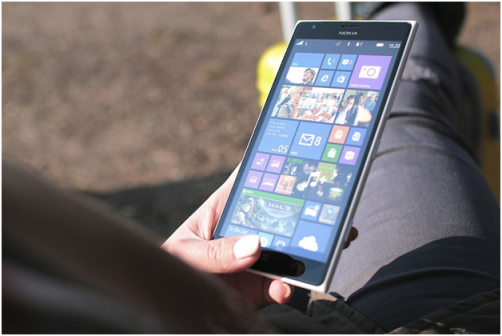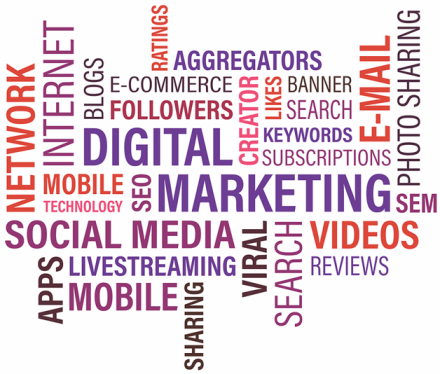Introduction:
In the digital age, the effectiveness of search engines for businesses cannot be overstated. As the gateway to the vast realm of online information, search engines play a pivotal role in shaping the visibility, credibility, and success of businesses across industries. This extensive exploration delves into the multifaceted impact of search engines, elucidating how they serve as a driving force for brand exposure, customer acquisition, and sustained growth in the competitive digital landscape.
Section 1: The Significance of Search Engines in the Digital Landscape
1.1 Defining the Role of Search Engines
At the core of the online experience lies the ubiquitous search engine. Whether it’s Google, Bing, or Yahoo, search engines function as digital compasses, guiding users to relevant information, products, and services. Understanding their significance is paramount for businesses seeking to establish a robust online presence.
1.2 The Evolution of Search Engines: From Information Retrieval to Decision-Making
The journey of search engines has evolved from simple information retrieval tools to sophisticated platforms that influence decision-making. Users turn to search engines not only for answers but also for product research, reviews, and recommendations. The influence of search engines spans the entire consumer journey, making them integral to business success.
Section 2: Visibility and Brand Exposure
2.1 Search Engines as the Gateway to Visibility
For businesses striving to be discovered in the vast expanse of the internet, search engines serve as the primary gateway to visibility. A prominent position in search engine results pages (SERPs) ensures that businesses are not only seen but also considered by users actively seeking relevant information or solutions.
2.2 The Power of Organic Search: Building Trust and Credibility
Organic search results, earned through effective Search Engine Optimization (SEO) strategies, hold particular significance. Users tend to trust websites that appear in top organic results, considering them authoritative sources. This trust builds over time, fostering credibility and influencing user perceptions of a business’s expertise and reliability.
Section 3: Customer Acquisition and Conversion
3.1 Search Engines as Customer Acquisition Channels
Search engines are dynamic customer acquisition channels. Users actively searching for products or services are potential customers in the making. By strategically positioning a business in search results, organizations can attract a targeted audience, driving them to explore offerings and potentially convert into customers.
3.2 Keyword Optimization and Relevance: The Catalyst for Conversions
Effective keyword optimization is the linchpin of customer acquisition through search engines. Understanding the language and queries users employ allows businesses to tailor their content, ensuring relevance to user intent. By aligning content with user needs, businesses increase the likelihood of converting visitors into customers.
Section 4: Search Engines and Consumer Behavior
4.1 Influencing Decision-Making Processes
Consumer behavior is intricately linked to search engine usage. From initial research to final purchase decisions, users rely on search engines to inform and guide their choices. Businesses that strategically position themselves throughout this journey can significantly influence consumer decisions, becoming preferred choices in their respective industries.
4.2 Local Search and Mobile Influence: Navigating a Mobile-Centric Landscape
The rise of mobile devices has further amplified the impact of search engines on consumer behavior. Local search, facilitated by location-based queries, has become a crucial aspect of decision-making. Businesses optimizing for local search ensure they capture the attention of users seeking products or services in their immediate vicinity.
Section 5: Search Engine Marketing (SEM) and Paid Advertising
5.1 Enhancing Visibility through Paid Advertising
While organic search is foundational, paid advertising through Search Engine Marketing (SEM) offers businesses additional avenues for visibility. Paid search results, often displayed prominently above organic results, provide an opportunity for businesses to secure immediate visibility and attract users actively searching for specific keywords.
5.2 PPC Campaigns: Precision and Measurable Results
Pay-Per-Click (PPC) advertising, a subset of SEM, allows businesses to bid on keywords and pay only when users click on their ads. This precision in targeting, coupled with measurable results, empowers businesses to optimize their ad spend, ensuring maximum return on investment (ROI) for their advertising efforts.
Section 6: Data-Driven Insights and Analytics
6.1 The Role of Data in Refining Strategies
One of the inherent strengths of search engines lies in the data they generate. Analytics tools like Google Analytics provide businesses with valuable insights into user behavior, keyword performance, and conversion rates. This data-driven approach enables businesses to refine their strategies, optimizing for success based on real-time information.
6.2 Continuous Optimization: Adapting to Trends and User Preferences
The dynamic nature of the digital landscape demands continuous optimization. By leveraging data and analytics, businesses can adapt to evolving trends and user preferences. This iterative approach ensures that strategies remain relevant, aligning with shifts in consumer behavior and search engine algorithms.
Section 7: Challenges and Opportunities in Search Engine Effectiveness
7.1 Algorithm Changes: Navigating the Dynamic Landscape
Search engines, particularly Google, frequently update their algorithms. While these changes present challenges, they also create opportunities. Businesses that stay informed and adapt their strategies accordingly can capitalize on algorithm updates to enhance their visibility and maintain a competitive edge.
7.2 Competitive Landscape: Standing Out in a Crowded Space
The competitiveness of search engine results pages poses a challenge for businesses. However, it also underscores the importance of differentiation. Businesses that invest in unique value propositions, high-quality content, and strategic positioning can stand out amidst competition, capturing the attention of their target audience.
Section 8: Search Engines in Global Markets
8.1 Global Reach: Expanding Beyond Borders
For businesses with global aspirations, search engines serve as bridges to international markets. Optimizing for international SEO allows organizations to reach audiences across borders, adapting their strategies to cater to diverse cultures, languages, and search behaviors.
8.2 Multilingual SEO and Cultural Relevance
Multilingual SEO is instrumental in reaching global audiences. Beyond language considerations, businesses must also prioritize cultural relevance. Understanding the nuances of different markets ensures that content resonates with local audiences, fostering trust and facilitating successful market penetration.
Section 9: Future Trends and Innovations in Search Engine Dynamics
9.1 Voice Search and Conversational Interfaces
The rise of voice search and conversational interfaces represents a paradigm shift in search engine dynamics. Businesses that anticipate and optimize for natural language queries can position themselves as leaders in this evolving landscape, catering to users who increasingly rely on voice-activated devices.
9.2 Artificial Intelligence (AI) Integration
The integration of Artificial Intelligence (AI) into search engine algorithms enhances user experiences. AI-driven algorithms can understand user intent, predict preferences, and deliver more personalized results. Businesses that leverage AI technologies in their SEO strategies stay ahead of the curve, providing users with tailored and relevant content.
Section 10: Conclusion
In conclusion, the effectiveness of search engines for businesses extends far beyond mere visibility. From influencing consumer behavior and facilitating customer acquisition to providing data-driven insights and opening doors to global markets, search engines are integral to the success of modern businesses. By embracing best practices in SEO, SEM, and content optimization, businesses can harness the full potential of search engines, ensuring they not only navigate the digital landscape but also thrive and evolve in the ever-changing dynamics of the online world. In the era of information abundance, the strategic utilization of search engines is not just an option; it’s a foundational imperative for businesses aspiring to achieve sustained growth and relevance.


